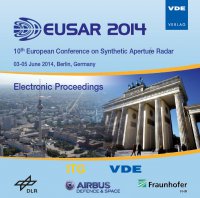Fast processing of very high resolution and/or very long range airborne SAR images
Konferenz: EUSAR 2014 - 10th European Conference on Synthetic Aperture Radar
03.06.2014 - 05.06.2014 in Berlin, Germany
Tagungsband: EUSAR 2014
Seiten: 4Sprache: EnglischTyp: PDF
Persönliche VDE-Mitglieder erhalten auf diesen Artikel 10% Rabatt
Autoren:
Cantalloube, Hubert (ONERA DEMR chemin de la Hunière Palaiseau, France)
Inhalt:
Beyond autofocus and motion compensation issues, airborne SAR imaging at very high resolution, at very long range, or on wide swath raises severe computational difficulties due to the large raw signal data block involved, as well as huge resulting image handling issues. With the exception of a technical detail with azimuth resampling in the sliding spotlight geometry required by very high azimuth resolution (namely, consequences of an integration angle possibly wider than the Doppler ambiguous angle), the image synthesis can be performed with a conventional stripmap processor, but the processing must be divided in sub-parts due to the limited memory available on one computer node. This processing by part may also decrease processing duration by processing sub-parts simultaneously in parallel on distinct computing nodes. The global computation time can also be limited by using massively parallel processor nodes such as graphic processing units (GPU), but as graphic memory on these devices are even more limited (though much faster) than that available on conventional CPU based nodes, expedients such as swapping with concurrent transfers & computations and multi-GPU pipelining are required. Acceleration of autofocus and image registration, which are the two next heavier computations after image synthesis, will be also addressed.


